Iridescence phenomena refer to the optical effects that generate colors very sensitive to the viewing and lighting directions. Such colors are called iridescent colors. The physical mechanisms causing iridescences include:
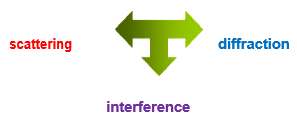
Precious opal is a natural iridescent material. In the gem opal, nature spontaneously makes simple fcc crystals, where amorphous SiO2 spheres naturally self-assemble in regular fcc globules, cemented by a disordered matrix of silica spheres and amorphous silica. The amorphous silica spheres are ordered like the atoms in a crystal lattice, but on a scale a thousand times larger.
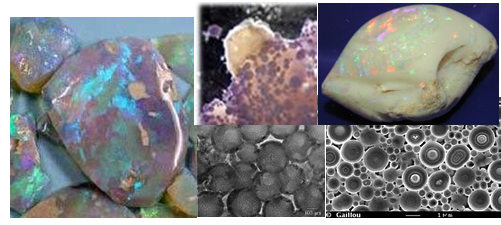
Gem opals, wings of butterflies and peacocks, fish scales, beetles, among a large number of other biological and mineral materials exhibit iridescence, strong multiple scattering, and unexpected forbidden wave propagation in certain frequency ranges. Nanostructured systems are in the basis of such behavior.
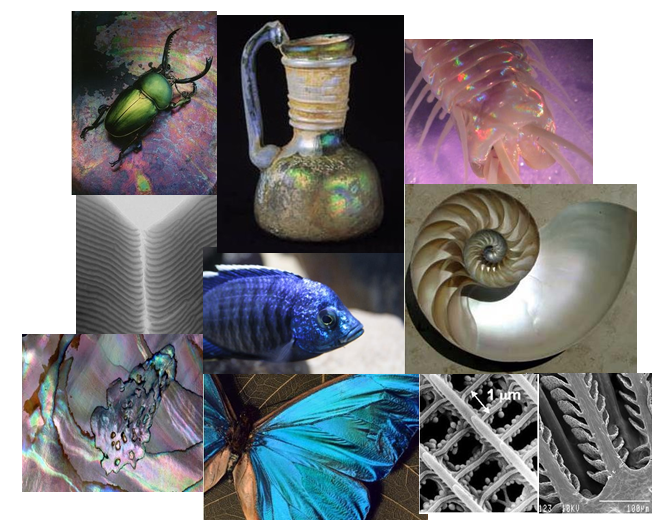
Photonic crystals (PCs) are the artificial counterparts. PCs, also known as photonic band gap materials (PBGs) a re artificial composite materials, micro/nanostructured on an optical length scale (e.g. few hundreds of nm), where a periodicity in the dielectric constant ϵ (or in the refractive index n, n ≅ √ϵ ) prevents light (of frequencies in the visible or near infra-red range) from propagating through the material due to Bragg diffraction, rather than to Fresnell reflection. The forbidden frequency range is called a stop band. All electromagnetic waves within the band gap will be totally reflected by the crystal, while spontaneous emission (within the band gap) will be totally suppressed.
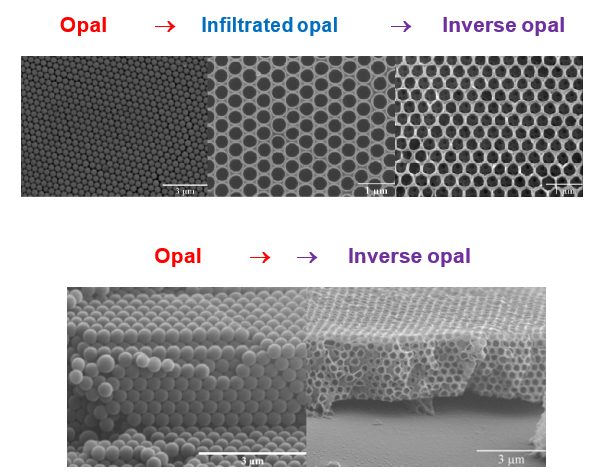
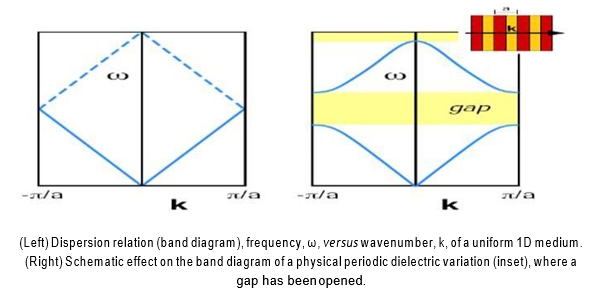

Photonic crystals (opals, infiltrated opals and inverse opals) to be used as sensors and optoelectronic devices have been produced by sol-gel and new synthesis were proposed.
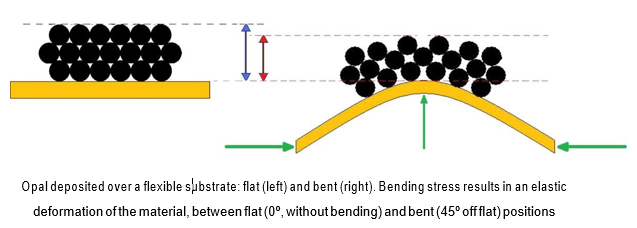
Designed and developed by: Diogo Reis